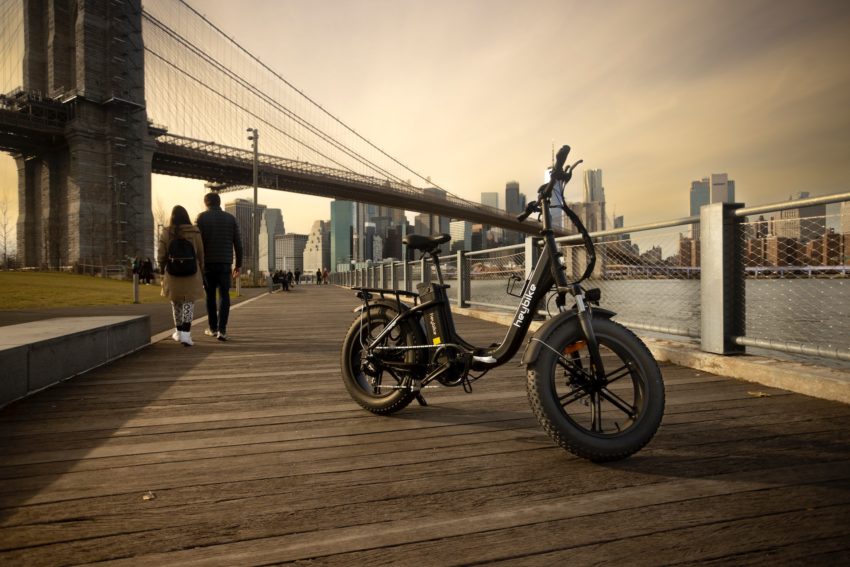
E-bikes are revolutionizing urban commuting and leisure riding, offering an accessible, eco-friendly, and enjoyable mode of transportation. However, the surge in their popularity underscores the critical need for e-bike safety awareness. Navigating the world on these motor-assisted two-wheelers requires not only an understanding of traditional cycling safety but also an awareness of the unique aspects of e-biking.
In this comprehensive guide, we aim to equip riders with essential safety knowledge and practices tailored to e-biking. From choosing the right gear to mastering safe riding techniques, this article provides a deep dive into the best practices for e-bike safety. Whether you’re a seasoned cyclist transitioning to an e-bike or a newcomer eager to join the e-biking community, this guide offers valuable insights to ride with confidence and safety. We’ll explore the nuances of handling an e-bike, the importance of protective gear, and strategies to navigate diverse riding conditions, ensuring you’re well-prepared for your e-biking adventures.
1. Understanding Your E-Bike
A fundamental step towards safe e-biking is understanding your e-bike, especially the nuances of electric bike frames and their components. The frame of an e-bike is designed to support the additional weight and speed capacities compared to traditional bicycles. It’s essential to familiarize yourself with how this affects the bike’s handling and balance. Knowing your e-bike’s specific features, such as battery placement, motor type, and weight distribution, is crucial. This knowledge not only enhances your riding experience but also informs better maintenance and handling practices, ensuring a safer ride.
2. Wearing Appropriate Safety Gear
Wearing the right safety gear is paramount when riding an e-bike. A helmet should be your top priority, ideally one specifically designed for e-biking. It’s also wise to invest in other protective gear like padded cycling gloves to protect your hands and durable footwear to maintain a good grip on the pedals. Reflective clothing or a high-visibility vest can significantly enhance your visibility to other road users, particularly during dawn, dusk, or night. Additionally, consider wearing padded clothing to cushion any impacts and protect your body in case of falls.
3. Staying Visible on the Road
Being visible to others on the road is a key safety factor. Equip your e-bike with bright LED lights on both the front and rear. These lights are crucial not just for night riding but also for cloudy or foggy conditions. Adding reflective strips or decals to your bike and helmet can further enhance visibility. Always check that your lights are functioning before you start your ride. In addition to lights, wearing bright or fluorescent clothing during the day and reflective gear at night can help you stand out.
4. Observing Traffic Rules and Etiquette
Obeying traffic rules is essential for safety. This means stopping at red lights and stop signs, yielding to pedestrians, and following the rules specific to e-bike riders in your area. Riding predictably and using hand signals for turns or stops helps communicate your intentions to drivers, cyclists, and pedestrians. Additionally, be courteous and share the road; avoid weaving through traffic or riding too close to other vehicles. Being aware of and respecting local e-bike laws, such as speed limits and designated bike lanes, is also crucial for safe riding.
5. Safe Handling and Maneuvering
Understanding how to handle and maneuver your e-bike is essential due to its unique characteristics. Practice braking gently to avoid abrupt stops that could lead to skidding, especially since e-bikes are heavier. Get comfortable with maneuvering at low speeds in tight spaces, as this can be trickier with the added weight. Be extra cautious in wet or slippery conditions, as e-bikes can take longer to stop. Also, be aware of how cargo or a passenger can alter the bike’s handling and adjust your riding style accordingly.
6. Regular Maintenance and Inspection
Regular maintenance is essential to keep your e-bike in safe working condition. This includes checking the brakes, tires, battery, and electrical systems regularly. Ensure that the tires are properly inflated, and the brakes are functioning well. Regular servicing by a professional can also help in identifying and fixing any potential issues before they become safety hazards.
7. Riding in Adverse Weather Conditions
Riding an e-bike in adverse weather conditions such as rain, snow, or strong winds requires extra caution. It’s important to adjust your riding style to suit the conditions – this might mean reducing speed, increasing stopping distances, and using lights and reflective gear for visibility. Waterproof clothing and non-slip gloves can also enhance comfort and control.
8. Understanding and Navigating Traffic
Understanding how to navigate traffic safely on an e-bike is crucial, especially in urban settings. Stay alert, anticipate the actions of other road users, and always maintain a safe distance from vehicles. Be particularly cautious at intersections and be aware of vehicles’ blind spots.
9. Knowledge of Battery and Range Limits
Understanding your e-bike’s battery life and range limits is important to avoid getting stranded. Plan your routes accordingly, and always have a contingency plan, like knowing public transport options or having a backup charger.
10. Promoting E-Bike Safety Awareness
Promoting e-bike safety awareness is vital. Join or form community groups that focus on safe e-biking practices. Share experiences and learn from others to enhance your safety knowledge.
Conclusion
E-bike safety is a multifaceted aspect that requires attention to gear, maintenance, and riding habits. By following these best practices, e-bike riders can ensure a safe and enjoyable experience. Regular maintenance, understanding your bike, wearing the appropriate gear, and being aware of your surroundings are key. As the popularity of e-bikes continues to grow, so does the importance of e-bike safety. Whether commuting to work or riding for leisure, prioritizing safety ensures that the e-biking experience is both enjoyable and secure.